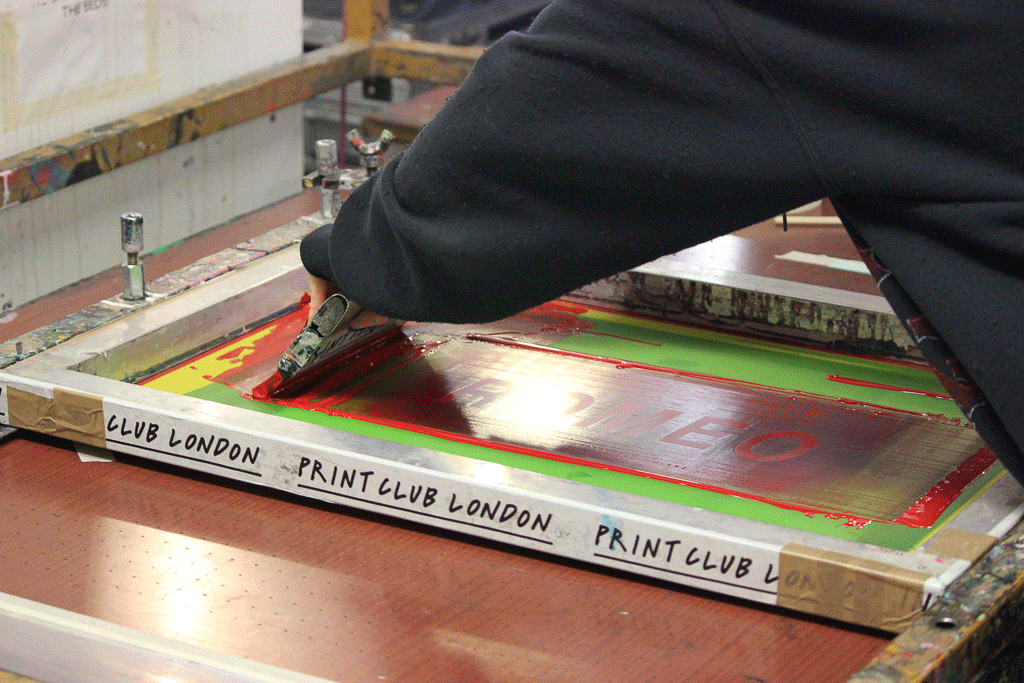ChatGPT said: The ultimate guide to 10:9 Design Screen Printing Texas for businesses and individuals
The Necessary Guide to Understanding Screen Printing and Its Versatile Utilizes
Screen printing has an abundant history that goes back to ancient times, evolving right into an innovative technique utilized throughout different industries today. This overview discovers the intricacies of the screen printing process, describing its applications in style, home, and advertising design - 10:9 Design Embroidery. Understanding these principles can open creative potential for both creative and business jobs. The complying with areas will certainly disclose necessary suggestions and methods to enhance one's screen printing endeavors
The Background of Screen Printing
Screen printing has roots that trace back centuries, its evolution reflects the artistic and technical innovations of numerous societies. Coming from ancient China, the strategy was at first used for decorating fabrics and later spread to Japan, where it came to be essential to Ukiyo-e woodblock printing. The method shifted to Europe in the 18th century, where it obtained popularity among artisans and industrial printers. The creation of photo solution in the 20th century reinvented screen printing, enabling even more complex designs and greater effectiveness. Artists like Andy Warhol even more moved its appeal, making use of the tool to produce iconic works that combined commercialism and great art. By the late 20th century, screen printing had actually established itself as a versatile method, utilized in vogue, advertising, and art. Today, it remains to develop, integrating digital technology and expanding its applications throughout numerous industries.
The Screen Printing Refine Explained
Screen printing changes artistic visions right into tangible designs through a collection of exact steps. Originally, an image is produced and after that moved onto a screen, commonly made of fine mesh textile stretched over a frame. A light-sensitive solution is related to the screen, which is exposed to light, solidifying in locations not covered by the photo. After rinsing the unhardened emulsion, a stencil is developed.
Next, the screen is positioned over the substrate, whether it be textile, paper, or one more material. Ink is after that pressed via the open areas of the pattern making use of a squeegee, depositing the style onto the substrate listed below. This process can be duplicated for numerous shades, calling for separate screens for every shade. The published thing is cured using heat to ensure the ink adheres properly, resulting in a durable, dynamic design ready for usage.
Kinds Of Screen Printing Techniques

Furthermore, specialized strategies, such as discharge screen printing, eliminate color from the textile to produce softer prints, while aluminum foil screen printing applies metal aluminum foil to achieve a shiny coating (10:9 Design reviews). Each method offers unique features, accommodating various innovative requirements and production scales, ultimately increasing the opportunities within the screen printing domain
Applications of Screen Printing in Numerous Industries

Additionally, the signage and marketing fields utilize screen printing for creating appealing displays and banners. This method permits strong shades and intricate designs that catch attention. In electronic devices, screen printing is utilized for using conductive inks to circuit card, crucial for component links. The home style industry welcomes screen printing to generate distinctive designs on fabrics and wall surface art. In general, screen printing works as an essential device throughout diverse fields, boosting products with customized and aesthetically appealing graphics.
Tips for Effective Screen Printing Projects
While carrying out a screen printing job, mindful interest to detail can substantially enhance the last outcome. First, selecting high-grade products is essential; this includes the screen, see post inks, and substratums. Using proper mesh counts can affect ink deposition and information resolution. Prep work is similarly vital; detailed cleansing of displays and correct direct exposure times ensure crisp prints.
Next off, precise enrollment is essential for multi-color prints. Utilizing positioning devices can aid attain exact layering. Additionally, testing prints on scrap products before manufacturing helps determine prospective problems without wasting sources.

Regularly Asked Concerns
What Materials Are Ideal for Screen Printing on Fabric?
Cotton and polyester blends are excellent for screen printing on fabric due to their resilience and ink absorption. Furthermore, specialty click site materials like silk or canvas can create distinct textures and coatings, enhancing the total layout quality.
Just how Do I Clean and Maintain Screen Printing Tools?
To maintain and clean screen printing equipment, one should routinely wash screens with suitable solvents, evaluate mops for wear, lubricate moving components, and shop all items in a completely dry, dust-free environment to extend their lifespan.
What Are the Environmental Effects of Screen Printing?
Screen printing can have substantial environmental influences, consisting of chemical waste from inks and solvents, water usage throughout cleansing procedures, and energy usage. Sustainable methods and green products are essential for reducing these negative effects.
Can Screen Printing Be Done in the house Efficiently?
Screen printing can be successfully done at home with the best products and techniques. Enthusiasts can produce high quality prints, though success depends on their ability level, equipment, and understanding of the process included.
What Are the Expenses Connected With Beginning a Screen Printing Service?

Starting a screen printing business involves prices for tools, materials, and office. Preliminary costs usually vary from a few hundred to a number of thousand dollars, relying on the range, quality of equipment, and desired production capacity.
Screen printing has a rich background that dates back to old times, progressing into an innovative method utilized throughout different sectors today. Another method, rotary screen printing, utilizes cylindrical displays, promoting constant printing on fabric rolls, therefore boosting performance for massive manufacturings. Additionally, specialized techniques, such as discharge screen printing, eliminate dye from the material to create softer prints, while aluminum foil screen printing applies metal aluminum foil to attain a glossy surface. In the fashion field, screen printing is commonly used to create vivid styles on apparel, allowing brands to showcase their distinct styles. Cotton and polyester blends are perfect for screen printing on textile due to their sturdiness and moved here ink absorption.